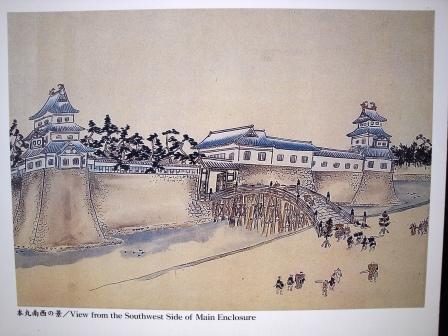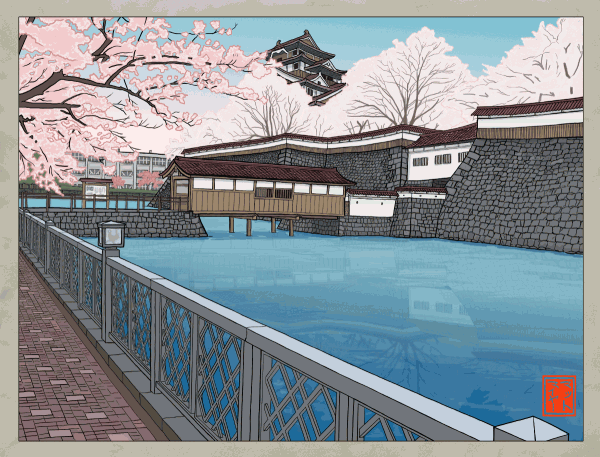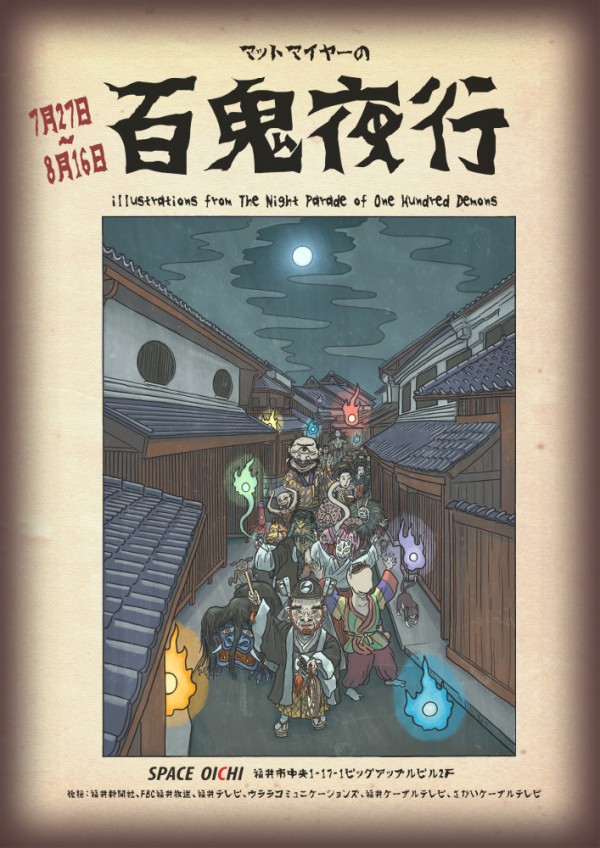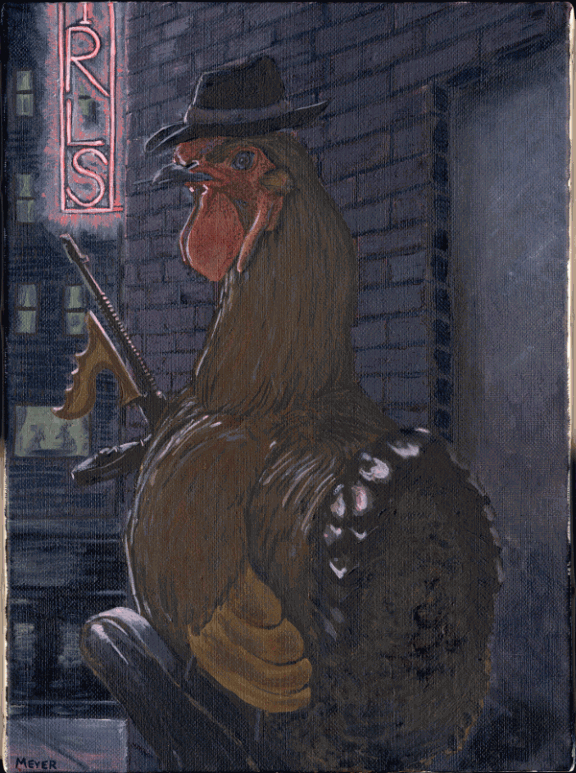I love history. When my mind wanders, one of the things I constantly go back to is imagining different worlds if history had been different. You know, like if you could go back in time and give Julius Caesar a modern chemistry textbook, or warn the American Indians about the crap the Europeans are trying to pull. Japan has an amazing and rich history, and riding my bike through town usually ends up with me daydreaming about different time periods here (a little dangerous perhaps). Particularly here in Fukui prefecture, where the modern world has just barely taken a foothold, there are so many places where the land is untouched by foreign influence or the modern global culture. It’s easy to get lost in one’s imagination.
Historically, Fukui was a very important military and cultural center of Japan for many centuries. After the feudal period its power waned considerably, but in its heyday it was one of the top population centers in Japan. Sadly, though, that history is mostly buried here. All of the castles have been leveled and paved over, the aqueducts filled in and turned into streets and real estate, and most of it has been forgotten even by the residents.
Fukui castle is one of the sites that almost brings tears to my eyes when I think how much history has been squandered. Currently the prefectural capital and largest city in the prefecture, Fukui used to be a rural swampland called Kitanosho. In the late 1500’s a castle was built here, and soon afterwards war came. The first castle was burnt down after 8 short years, and in 1606 a new castle was built at a nearby site. The whole city was designed and developed into a paragon of a castle town. Moats and canals were dug all over town separating it into many districts, walls and gates were erected all over for defense, and walled samurai towns sprung up. Looking at the old maps of Fukui city, it looks like it must have been completely impregnable.
Although the town was never taken after that, a fire destroyed the main keep in 1669 and it was never rebuilt. The innermost walls remained, as did the noble’s houses on the castle grounds, though, and it continued to be an important castle town until the Meiji Restoration. Sadly, the remaining walls and palaces were burned down when Fukui was firebombed in World War 2. A few years after the city was burnt to the ground by bombers, a huge earthquake struck and re-leveled the city once again. The stone walls of the castle still bear the marks of that earthquake. During the second reconstruction, the cityscape was changed and it lost its identity as a castle town. The aqueducts and moats were paved over with cement and a lot of important cultural heritage was lost. While other cities on Japan reconstructed their castles and turned them into parks and tourism centers, Fukui erased its past, even going so far as to build a hideous government building on top of the remains of the castle palace.
Today the city is expanding, and as it grows and new construction takes place, workers are constantly finding old walls and remnants of the castle town. Thankfully, some work has been done to restore these artifacts when they have been found, and there are plaques scattered about the city wherever a historical remnant has been uncovered. Whenever I run into one of these I stop for a while and try to picture what the city could have looked like if the people in charge of reconstructing the city had had a little more foresight (and hindsight) about preserving their history.
A few years ago, a minor reconstruction at the castle grounds took place. One of the rotting wooden footbridges was reconstructed into its original, beautiful form. On the day it opened, I went to visit it, and it was just superb. Even though it was only a bridge, the smell of the new timber and the authentic reconstruction of the ancient building stirred my imagination. I decided I wanted to paint a view of what the town might look like if the castle had never burned down, and if it had been preserved properly.
I started this painting two years ago and got about halfway done when I hit a big roadblock: I couldn’t find any reference of what the castle looked like! I thought about making up a new facade for the castle based on the other castles I have visited, but that just didn’t seem right. Each castle is unique, and that wouldn’t be fair to Fukui castle or the castle I would have copied. I had to put the painting on hold until I could accurately reconstruct it.
For the past two years I have visited libraries, history museums, and done countless image searches trying to build up a database of images I could use to reconstruct the castle. Every now and then I would find a goldmine. One store was selling postcards with pre-WW2 photographs of the town. I could finally reconstruct the outer walls! At another store I found a few old woodblock prints with images of the castle, printed back when the castle was still around! But sadly the perspective was way off and it was hard to get an accurate measuring from them. I did a lot of research and discovered a whole lot about Fukui’s history as well — not just the castle. It was like unfolding a mystery that was hidden all around me; in the street names, the rivers, under the streets, and the property lines remnants of the old castle town were still evident. From one of the paintings, I learned that one of my friend’s apartments was actually built right on top of one of the old gateways into the city!

A scale model of Fukui Castle I stumbled upon while climbing Mt. Asuwa. Who hides such a beautiful piece of artwork in a field behind a parking lot on top of a mountain??

A pre-war photo showing the walls of Fukui castle

Photos showing various shots of old Fukui

A very old painting showing the castle before it burned down

A diagram of the main keep located on a plaque outside of the castle ruins

3D digital recreation of Fukui Castle
Finally, I discovered a website that created some 3D images of old castles, and lo and behold, they recreated a shot of Fukui castle! It was the final bit of reference I needed to be able to reconstruct what the castle might have looked like. I spent the better part of this week putting together my references and sitting down to finish this two-year-old painting, and here is the result. The only part I was unable to faithfully recreate is the gatehouse beyond the bridge, as none of the references I found were able to give me a good image of it. So I did my best to recreate what it may have looked like, based on other castles’ gatehouses.

Fukui castle, seen from the south, during cherry blossom season (click for a larger version)
In one week, I will be moving back to Echizen city after spending a year here in Fukui. Even though Echizen is only 30 minutes away from Fukui, I’m especially happy that I was able to finish this painting now, rather than later. I feel like I can present it now, saying thank you to the city that has struck my imagination so strongly. (After all, after I return to Echizen I’m going to resume obsessing over that city’s own rich, forgotten history.)














